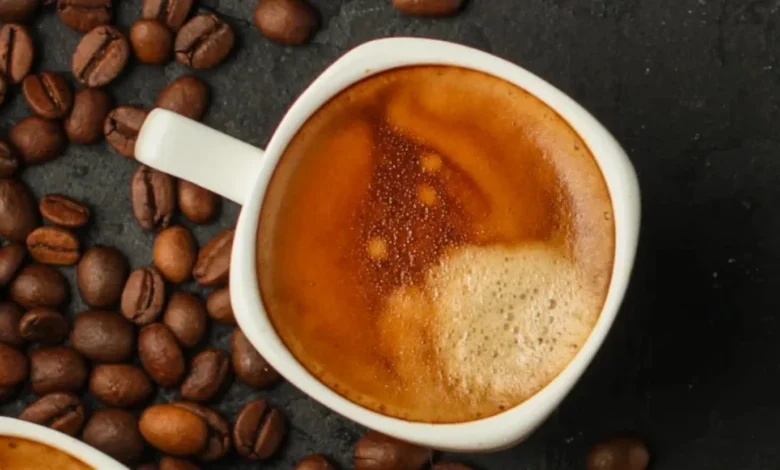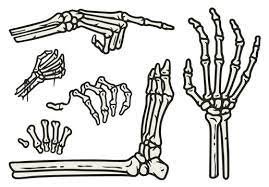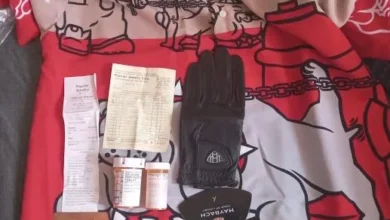How Many Ounces in a Cup? A Simple Guide for Everyday Kitchen Conversions

If you’ve ever followed a recipe and wondered, “how many ounces are in a cup?”, you’re definitely not alone. It’s one of the most common kitchen measurement questions, and getting it right is important for achieving the best results in cooking and baking. While it seems like a simple answer, there are actually a few details worth understanding depending on what you’re measuring.
In this article, we’ll clear up the confusion around cups and ounces, break down the different types of ounces, and give you some practical kitchen tips so you’ll never have to second-guess your measurements again.
What Is an Ounce and Why Does It Matter in the Kitchen?
An ounce (oz) is a unit of measurement used to measure both weight (for dry ingredients) and volume (for liquid ingredients). This is where things can get a little tricky because not all ounces are created equal — at least in the kitchen. There are fluid ounces (fl oz), which measure volume, and ounces by weight, which measure how heavy something is.
Understanding the difference between the two is essential, especially when you’re working from a recipe that isn’t crystal clear. For instance, a cup of flour doesn’t weigh the same as a cup of milk, even though they both fill the same cup. Flour is much lighter, while milk, being a liquid, has its volume measured in fluid ounces.
That’s why having a good grasp on both weight and volume measurements can save you from kitchen disasters. It helps ensure your recipes turn out the way they’re meant to, whether you’re baking delicate pastries or whipping up a hearty stew.
So, How Many Ounces Are in a Cup?
Let’s get to the question you came for: how many ounces are in a cup? The answer depends on whether you’re talking about fluid ounces (volume) or ounces by weight. In terms of liquid measurements, 1 U.S. cup equals 8 fluid ounces.
This measurement holds true for any liquid — whether it’s water, milk, broth, or juice. So, if a recipe calls for 2 cups of water, you know that’s 16 fluid ounces. Simple, right? But when it comes to dry ingredients, it’s a different story because the weight of a dry ingredient in ounces varies depending on its density.
For example:
- 1 cup of all-purpose flour weighs about 4.5 ounces.
- 1 cup of granulated sugar weighs about 7 ounces.
- 1 cup of butter weighs 8 ounces (since butter is often measured by weight, not volume).
This is why many professional bakers prefer using a kitchen scale — it ensures precision, especially in recipes where accuracy matters.
Fluid Ounces vs. Dry Ounces: What’s the Difference?
One of the most common sources of confusion in the kitchen is the difference between fluid ounces and dry ounces. Even though both use the term “ounce,” they measure different things. Fluid ounces measure volume — how much space something takes up — while dry ounces measure weight — how heavy something is.
To make it clearer:
- 8 fluid ounces = 1 cup (liquid measurement)
- The number of dry ounces in a cup depends on the ingredient
For liquids, the conversion is consistent across the board. Whether it’s a cup of water, a cup of oil, or a cup of juice, it will always be 8 fluid ounces. But for dry ingredients, you need to check a conversion chart or use a scale for accuracy because each ingredient has a different weight per cup.
Understanding this distinction is crucial if you want your recipes to turn out perfectly. Misinterpreting the two could result in a batter that’s too runny, a dough that’s too dry, or a dish that’s over-salted.
Why Kitchen Measurements Matter More Than You Think
Precise kitchen measurements might seem like overkill for casual cooking, but they’re essential for consistent and successful results, especially in baking. Baking is a science, where the ratio of ingredients affects texture, flavor, and rise. Too much flour or too little liquid can completely change the outcome of your dish.
In savory cooking, there’s a bit more flexibility. You can often adjust seasonings and liquids as you go. But even then, having a good sense of measurements — knowing exactly how many ounces are in a cup — saves time and reduces the risk of mistakes.
Plus, understanding these measurements is helpful when you’re scaling recipes up or down. If you know that 1 cup equals 8 ounces, you can quickly double or halve quantities without having to dig through conversion charts every time.
Handy Kitchen Conversions to Remember
Since we’re on the topic, it’s useful to keep a few common kitchen conversions in your back pocket. Here are some quick references you can rely on:
- 1 cup = 8 fluid ounces
- 1/2 cup = 4 fluid ounces
- 1/4 cup = 2 fluid ounces
- 1 tablespoon = 0.5 fluid ounces
- 1 fluid ounce = 2 tablespoons
Having a kitchen scale and a set of both dry and liquid measuring cups can also make a world of difference. It helps avoid mix-ups and ensures your recipes turn out just the way you envisioned.
Final Thoughts
So, next time you find yourself wondering “how many ounces are in a cup?”, you’ll know the answer — it depends! For liquids, 1 cup equals 8 fluid ounces. For dry ingredients, it varies based on what you’re measuring.
Being mindful of the difference between fluid and dry ounces will help you navigate recipes more confidently and achieve better results in your kitchen. Whether you’re a beginner cook or an experienced home chef, mastering these little details adds up to big improvements in your cooking and baking adventures.
Would you like me to turn this into an SEO-ready HTML post or suggest meta descriptions and tags for it too? I can prep that if you’d like.
Sure — here’s a fresh, casually expert article written in clean, clear English on the keyword “how many oz in a cup”, complete with a title, headings, and at least 3+ paragraphs per section. Let’s go:
How Many Oz in a Cup? Your Go-To Kitchen Conversion Guide
If you’ve spent any time in the kitchen, you’ve probably run into recipes asking for a cup of something and then others that use ounces. That’s when you start wondering, “how many oz in a cup?” It’s one of those simple but essential bits of kitchen knowledge that every home cook should have tucked away. Whether you’re baking brownies, making soup, or mixing cocktails, understanding these basic conversions can save you a lot of guesswork.
In this article, we’ll break it down clearly and casually — explaining how many ounces are in a cup, the difference between fluid ounces and dry ounces, and why these conversions matter when you’re cooking or baking.
How Many Oz in a Cup? The Quick Answer
Let’s cut to the chase: in the United States, 1 cup equals 8 fluid ounces (fl oz). So, if you’re measuring a liquid — like water, milk, or oil — and the recipe calls for one cup, you’ll need 8 fluid ounces.
This is one of the few kitchen conversions that stays the same no matter what liquid you’re using. Whether it’s a cup of almond milk for a smoothie or a cup of chicken broth for a soup, it will always equal 8 fluid ounces. Simple, right? Well, it gets a little more interesting when you start dealing with dry ingredients.
For dry items like flour, sugar, or oats, the number of ounces in a cup isn’t consistent because ounces measure weight, not volume. A cup of flour doesn’t weigh the same as a cup of sugar. That’s where many people get tripped up, especially when switching between fluid ounces and ounces by weight.
And just to make things clear — when recipes don’t specify, they typically mean fluid ounces when using the term “oz” next to a cup measurement. It’s a good habit to double-check, though, especially when baking, where precision matters.
Fluid Ounces vs. Dry Ounces: What’s the Difference?
Here’s where things get a little tricky but important. The word “ounce” can mean two different things in the kitchen: it can measure volume or weight.
- Fluid ounces (fl oz) measure volume — how much space something takes up.
- Dry ounces (oz) measure weight — how heavy something is.
For example, 1 cup of water is 8 fluid ounces, but 1 cup of all-purpose flour is about 4.5 ounces by weight. That’s nearly half the weight for the same volume! This difference matters a lot, especially when baking. Too much flour or too little sugar can ruin the texture, flavor, and rise of your cakes and breads.
Another thing to remember is that while 8 fluid ounces always equal 1 cup, the number of dry ounces in a cup depends on what ingredient you’re measuring. That’s why experienced bakers often use a digital kitchen scale for dry ingredients — it takes out the guesswork and ensures accurate, consistent results every time.
Why Kitchen Measurements Matter More Than You Think
Sure, cooking can be about creativity and improvisation, but when it comes to measurements, a little accuracy goes a long way. Understanding basic kitchen conversions like how many oz in a cup can seriously improve your cooking and baking skills.
When you’re baking, measurements are less forgiving. A tablespoon too much or too little of a key ingredient can affect how your recipe turns out. Over-measuring flour by even a little can make cookies too dense or a cake too dry. Similarly, under-measuring liquids can cause doughs and batters to be too stiff.
Even when cooking savory dishes, having a clear sense of measurements helps you control flavors, textures, and consistency. It’s also super useful when scaling recipes up or down. If a soup recipe serves 4 and you need to make it for 8, you’ll need to double everything — and knowing your ounces-to-cup conversions makes this process much smoother.
Quick and Handy Kitchen Conversion Chart
Because we all need a cheat sheet sometimes, here’s a quick reference you can keep handy for the next time you’re cooking:
- 1 cup = 8 fluid ounces
- 1/2 cup = 4 fluid ounces
- 1/4 cup = 2 fluid ounces
- 1/3 cup = 2.67 fluid ounces
- 1 tablespoon = 0.5 fluid ounces
- 1 fluid ounce = 2 tablespoons
This simple conversion chart can save you from scrambling for your phone mid-recipe. Better yet, consider printing it out and sticking it inside a kitchen cabinet for easy access.
Final Thoughts: Mastering the Basics Pays Off
At the end of the day, knowing how many oz in a cup might seem like a tiny detail, but it can make a big difference in your kitchen confidence. From baking the perfect cake to whipping up a quick dinner without constantly second-guessing your measurements, mastering these simple conversions helps make your cooking more precise and enjoyable.
And hey — once you’ve got this down, you’ll be surprised how much easier it is to follow new recipes, double your favorite dishes, or even invent your own. So, keep this guide handy, trust your measuring tools, and happy cooking!
Would you like me to turn this into a quick SEO meta description and keyword tags as well? I can prep those for you too — just let



